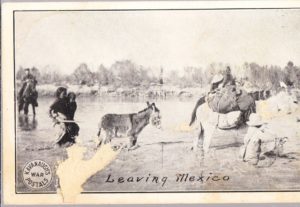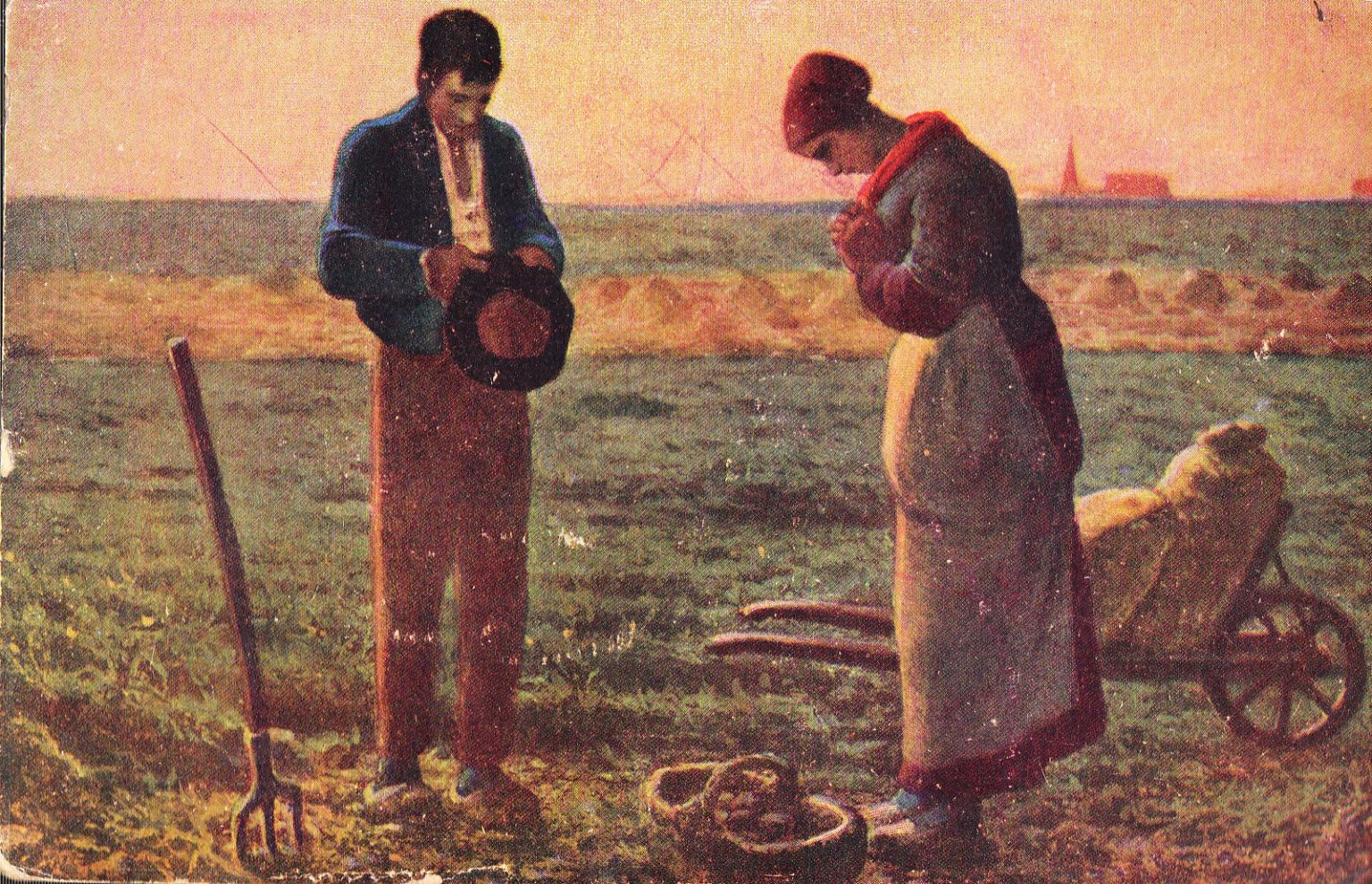“A rose by any other name would smell as sweet”- Romeo and Juliet, Act II, Scene II, (by you know who).
It’s a practice of generations, probably even of Natural Law, (I’ve just never delved into it that deeply since I’m an analyst and not a philosopher) but it does appear certain behavior patterns keep reappearing among certain classes of people, but are often given different names since they occur in thirty or forty year cycles, and are usually separated by at least two generations.
A pattern rises, thrives, then the reasons for it loses their novelty and fades into the overall floor plan of a social structure. But every time they’ve re-emerge they’re usually diagnosed as brand new, a new trend, when in fact they are a continuation of older, more deeply-rooted cultural symptoms, only given a new name…in part so that their “discoverer(s)” can stake some claim to having been the finder of this “new trend”, in order to possibly profit from it.
This is generally true for the 20th and post-20th Century, still, it is all according to a human nature flaw that has been around for centuries.
So it was in America with the children born to the wealthy of the Gilded Age (1870s), who arose from the industrial explosion after our Civil War, then again with the Baby Boom generation (1946-1964) who were born of millions of “hungry men” coming home from “the war” after 1945, their wealth gained in still other ways. There were three other generations that stood between those two cycles, but all were connected culturally in America.
Those connections are important to us now for they were uniquely American and appear to be what is on the chopping block for revision by next as we move into this next cycle.
This is because the post-Baby Boom generations, GenX (1965-1980), Millennials (1981-1996) and GenZ (1999-2012) (GenAlpha is still in the pot, so to speak) represent a potential disconnect from all that has gone before them…and I mean total disconnect, if certain modern cultural design engineers can have their way. And it could be achieved within 50 years, well within our 21st Century…which I won’t be around to see.
(Note, most of these modern social design engineers have no deeply planted roots in America as either a physical place nor an ideal. Much like the “engineer-bankers” who were imported to steer America away from its pedestrian notions of wealth management around 1900, modern imported technology-engineers feel we are just too small-of-mind to know how best to manage the great wealth our tiny minds somehow accidentally stumbled upon.)
This series of essays will be only a survey which asks a lot of questions, but we already have very good hints as to what may lay in store for the United States if the post-modern design engineers have their way. But we still have at our disposal an inventory of all the “life, liberty, and pursuit of happiness and property” conditions that “our kind” had created here from 1607 thru 2000 (when GenX was still of child-bearing age) that proves that the United States still has a working model of what really succeeds in Nature, is still exportable as a model, and which the majority of the Peoples of the world still want to have as a piece from that “shining city on a hill”.
Today, our analytical focus falls on Millennials and GenerationZ, who were born during a 30-year period, 1981-2012, and were sired by both those Baby Boomers or GenerationX. These more recent generations might be catalogued in the laboratory by the technologies that accompany them, but also by the fact they can carry those technologies around in their hands, often appearing to be permanent growths on their hands, so ubiquitously are they joined.
So in many ways these newer generations are unique, for even the slave populations of China carry those devices and glare down at them as they walk the streets of Shanghai, though limited in what they can read, or information they can share, as someone is always listening in.
But so do the once bare-foot poor who tripped across the Rio Grande…

…to find steady work at 15-cents a day, plus three meals and a cot, but now walk across the border in files-by-six, many with that device firmly attached to their hands.
Never in human history, I think, have generations been such the object of study not only in the name of Science, but also in the name of Profit, and last, but not least, as a key element of Mass Control…because they are those new generations!
- * * * * *
Ironically, one might also call this a modern “Age of Introspection”, for in order to achieve mass control the “Handlers and Manipulators” must be able to convince those moving elements that they are not selfish brats but are seeking only inner fulfillment, and that its achievement is their rightful due. This sits at the heart and soul of “Wokeism”.
Only, when I was in college in the the 1960s, we referred to this type of wealthy child as “navel gazers”, and yes, we were aware of their musical tastes, their hygiene habits, their politics, and generally avoided them socially. (As an upperclassman college mate from the bookstore I worked at commented about the unwashed, bra-less girls and bearded males from the northeast who descended in the 1960s, “I’ve never been that horny.”)
Many of those would have been the parents and grandparents of modern-day Woke-targets.
Their manner of speech, dress and thinking also was a kind of self-actualization, a process which began in the early 20th Century, when as one professor, (Robert Cohen) in 1993 referred to as “When the Old Left was Young”, (which, for illumination, is a stand-alone read, only not so much about the students of the 1930s than the state of their cheering sections in the academic community in the 90s.)
And there was Ayn Rand, yes, that insufferable Russian super-egoist, who tried to elevate selfishness to a virtue for her clique of followers. But she did put together a series of essays in 1971, The Return of the Primitive which covered the trek of the wealthy college kids from Berkeley ’64 forward in several essays in the Vietnam War era, which are still worth keeping on the bookshelf.
This series of essays will trace that “movement” forward as well as backwards, into ancient times, to establish similarities and the sameness in the sense of entitlement.
In this vein, this depiction of the modern navel-gazing “Age of Introspection” is not even remotely similar to the age of introspection when men like Thomas Aquinas and Augustine of Hippo, and women like Catherine of Siena, forsook worldly wealth and security to join a quiet solitude to study philosophy in the cloister, pursuing as some liked to call it then, the Mysteries of God and Christ and turning their lives over to service for those less fortunate. Some of them shaped history for centuries. And still do, in fact, they conquered realms Adolf Hitler, Napoleon Bonaparte, even Karl Marx, Lenin and Mao Tse-Tung could never dream of, much less attain.
Although that gentler sentiment still exists today more than we know among the wealthier class “who have do do no work today” (Shakespeare) that wing of the wealth class is no longer projected to the general public as virtuous, largely because there is no profit in publicizing doing good for the sake of Good, anymore. And the last thing handlers and manipulators want is for their “marks”, or targets, to know there are groups from their generation and economic class, that outnumber them in ratios of 4:1, 5:1 or more. (It’s an interesting demography, especially since it is so under-reported, which I’ll make an attempt at in this series.
The attention of modern trend-setters (“Influencers” is the modern term, I’m told) and other profiteers is first dedicated to trying to steer young people into chutes, as if they were cattle or sheep at the stock yards, so that they may be examined, before they are auctioned off to various would-be buyers who could profit from them. (I witnessed this in university in the 1960s, so an older, established practice.)
These days we see this daily, especially among the “Wokeism as a religion” cliques, who, much like Karl Marx, have a deep-down animus toward things that are God-friendly, probably because those things stand athwart doors they would like very much to have freedom to pass at their leisure, and even control as gate-keepers.
If you understand this one very elemental note of argument, you’ll see the fundamental difference between Good and Evil, no matter that both refer to themselves as Good and their opposite as Evil, clearly, Logic and Natural Law declare that only one can be Good and that the loser is predetermined, although as History proves, He, She or Them, may be able to sit atop the heap for awhile…sometimes up to almost 70 years.
This used to be a fundamental understanding about the nature of the combat between Good and Evil: i.e., that both exist, always have existed and always will exist, and that the contest will go on forever so long as Mankind survives. When I was a kid in the 1950s we didn’t have to know Latin or Greek in order to understand this very simple Natural Law precept. Common sense. With me it was learned with a bloody-nose…for lying, about which I was guilty as charged.
Even before mass media marketing became common, first via popular magazines (1900s), AM radio (1930s), television (1960) and now the internet (1990s), and bolstered by the whole Madison Avenue idea of selling products with catchy jingles in the daytime, and heaving bosoms in the evening, History shows that the scourges that appear on the world’s doorstep today had actually been on society’s doorstep in previous generations, only called by different names.
The practice of stealing one generation’s behavior patterns and nomenclature and changing their names to fit a younger audience has been a standard practice over my lifetime, which goes back to the days of early television. But not just in what we call now “pop culture”, itself a term originally associated with lower-class youth and their fancies for film and music, that arose just before World War II and blossomed in the 1930s. There was a pop culture in the 1890s, 1900s, even the ‘Roaring 20’s’ only there was no way to communicate the “pop” to the masses until radio, followed quickly by the record player for the home.
Still, even before Elvis or the Beatles, young women (with means) were standing along rope lines screaming their heads off for “Frankie” (Frank Sinatra).

But even this “scene” was predated by the “ladies” and that is indeed who they were, gentle ladies of rank, who poured in to hear Franz Liszt in concert, where the most prestigious ones always got into that front row.

And, yes, like Elvis and the Beatles, it was Liszt’s long flowing hair, and in their hair-pulling spasms some managed to remove a garter, or even their underpants and toss them up on the stage. I did a cultural history report on this subject in 2020 and it’s still instructive today.
In my lifetime those rich girls of leisure would grow in size and age to be called “Dead Heads”.
It was mass media that took not just the piano, but the bow and the fiddle, and the guitar, from out of the barn dance into gigantic concert halls, but most of all, onto records, which, when formatted into 45 rpm discs, could be fitted into jukeboxes found all over the country and would play a selection for only a nickle.
We know that societies that were born of the human appetites for military conquest, over and over again, all ending in the same manner, only…and here’s the catch…in some it only took a single lifetime for that conquest to fail, (Napoleon was 30 when he was put in military charge of France after the French Revolution, or Hitler, who was 24 when he tried his first takeover in Munich in 1923) while others lasted a few decades (the Soviet Union and most royal dynasties) before collapsing.
But there were still others (the Feudal System and a few empires, e.g. Ancient Egypt and Rome) whose systems were held together for centuries because of their more deeply-rooted building blocks. Institutions. Those systems survived regardless of which king or queen was at the “helm of the realm” at any given time.
The modern boundaries of Europe are still based on the basic land ownership constructs from the 9th Century.
As proof, when Queen Elizabeth II died a just days ago, she was one of the richest people in the world, based on land that was passed to her through centuries of kings and queens long before her own House of Windsor even existed. Her House of Windsor “had” won none of those lands, and “inherited” it in 1901 from the House of Hanover (and yes, they were both German-born houses), and is worth $28 billion dollars (of personal wealth), including large areas of property around Waterloo in modern Belgium, won at a famous battle fought there, and which ironically establishes the basic difference between America and the Europeans today, for a country feller named Stonewall Jackson (no really) had a #1 hit song in 1959 named after that battle, “Waterloo” which you might find educational, for it did teach a real history lesson (to Americans at least), while Europeans would likely prefer ABBA’s version of “Waterloo” in 1974, which Gordon Liddy would have much preferred, or my son, who’s collected everything ABBA ever performed.
For our purposes here Waterloo only proves how quickly property could be flipped in warfare, and how an English queen whose family wasn’t even there could come to own that spoil of war almost a hundred years later.
But Elizabeth was by no means the wealthiest royal in the world, for all those land arrangements were begun with the Feudal System of land ownership going back to 800 AD, when Pope Leo crowned Charlemagne as the first Holy Roman Emperor in Rome, nearly 350 years after the Roman Empire fell.
I’ve often called that coronation in 800 to be a “power-sharing” agreement, since the Church had fallen on survival-endangering hard times after Attila the Hun first attempted to conquer Rome in 453 AD. The Church needed security and the new Frankish Empire of Charles needed people who could read and write, so their “10% tithe” in exchange for a ticket to Paradise seemed like a good trade-off, especially since the royal classes owned almost 100% of the real estate of Europe. The Church was given 10% of their land, plus the individual power to collect rents, as well as the kings offering them a much less harrowing way to collect souls, which had often been pretty risky.
That 10% became so profitable that England’s king, Henry VIII, declared himself head of the Church in England in 1534, over 700 years after that “power-sharing” agreement was signed in Rome. (There were other reasons for Henry’s split besides personal greed; the Reformation had only begun in 1517, and Henry VIII was having all sorts of difficulties with Rome about its standing on his multiple divorces.)
For our purposes here, the Feudal System was based on the legal protection of all that property which no European could find a way to undo, until Karl Marx figured it all out..at least he thought…in 1848. (Barbara Tuchman’s A Distant Mirror, The Calamitous Fourteenth Century, (1978) portrays this relationship perfectly, and I keep my heavily underlined copy of her book on my bookshelf for reference.)
So of course, we’re seeing a similar conceptualizing of a new world economic and management order being talked about, only without the advice and consent of the world’s churches, or its congregations.
In some modern minds it is still “Serfs you were, Serfs you are, and Serfs you always will be.”, also quoted from Tuchman’s book, and analyzed more closely here.
Also take note: A second accidental prototype from the Feudal System, begun by the Magna Carta in 1215, caused or allowed the establishment in North America 400 years later, and 60 years before Marx, a built-from-scratch, from the bottom-up, system of government, created by a literate, well read (what we’d call today “middle class”) group of settlers who then had to learn the skills of staying alive…cutting wood, building cabins, and tilling the ground and growing food…as if they were low-born ex-serfs, not unlike Arkansas farmers who spread across the continent for close to 400 years. (Sam Walton built his Walmart from scratch almost the same way.)
Because it worked, this experiment allowed those people to prove things about Man’s innate abilities European thinkers had always believed to be “unthinkable”….such as figuring things out, and learning how things worked on their own…without a single drop of royal lineage in their blood. (Adam Smith also figured this out, around the same time as our War of Independence, and we’ll discuss in a later essay how the Old World has wanted to control Adam Smith’s vision of free markets being used by capable men such as Sam Walton to deny their modern day vision of kings their rightful piece of command and control.)
Kings came and went, still it took over 1000 years for that “king-system” to totally die, and Queen Elizabeth’s current inventory of property, now under the care and keeping of her son, Charles III, attests to its legacy.
But as we’ve witnessed in our own lifetimes, my own going back to that day in 1953 when I watched Elizabeth’s coronation in 1953, just a boy of 8, then, over the years watching the behavior of members of her family, a brother and sister, her children, now-King Charles III and his sons, William and Harry, have been showcasing the highs and lows of modern royal standards.
It’s always been that way.





